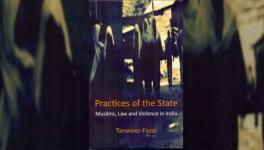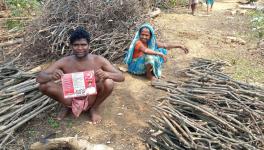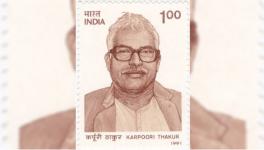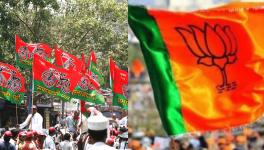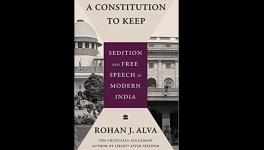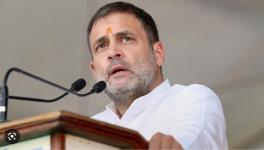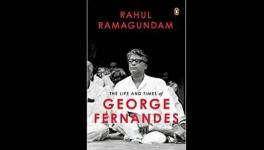A Political Journey Into Rural Kanpur
A fictional account of the politics of Uttar Pradesh during the first 25 years of freedom, The Politician is the first novel by TV journalist-turned-writer Devesh Verma, who holds a doctorate in Urdu literature. It is at its best when it captures the lives of the poor and lower-middle-class among the upper backward castes in Kanpur and its countryside. To an extent, Verma also captures Dalit reality.
Others have reviewed The Politician for literary merit and entertainment value, but few have commented on the Indian politics in the immediate post-Independence period that it depicts. In a way, this book fictionally articulates the 1987 Lloyd Rudolph and Susanne Rudolph book, In Pursuit of Lakshmi: The Political Economy of the Indian State. The Rudolphs describe the post-Green Revolution rise of the Jats and a section of the Kurmis and Yadavs, whom they call “bullock capitalists”. The chief protagonist of this novel and his family represent that burgeoning section.
The central character, Ram Mohan, is the “most educated man of an upwardly mobile backward caste in the region”, a college lecturer who possesses fine oratorical skills. He aspires to be an elected member of the state legislature, a position he can go to any extent to get. He does not work for “broad structural transformation at the local level”, as demonstrated by Craig Jeffrey and others in a 2008 essay in the context of Dalits of western Uttar Pradesh or by Kanpur-based academic AK Verma in his 2005 essay on backward caste politics. Though these are for more recent decades, arguably, they reflect the fallout of the actions of Ram Mohan of the novel before 1972. In a way, this novel is a fictional critique of what social science academics have been saying about the changing social composition and character of Uttar Pradesh politics.
Ram Mohan does not pick student politics as his route to upward political mobility. (Verma, the writer, went to Allahabad University and Jawaharlal Nehru University and is sure to be familiar with student politics in the region he writes on, but chooses a different path for his protagonist.) Ram Mohan thus acquires political power by exploiting the reputation knowledge gives him. He does this because it “was a time when instances of politicians known for their contribution to the world of letters would abound”.
Yet he is a believer in the status quo, a self-serving seeker of political power. Strangely, ideological debates, the social composition of the leadership and support base of the political parties and foreign affairs (not even India’s stakes and role in the creation of Bangladesh) do not concern him. The novel also avoids mention of the communists, as if they did not exist during 1947-72, when they were actually the principal Opposition in the early years of Independence.
Ram Mohan is depicted as a Kurmi leader who has a long association with a political heavyweight and champion of peasant politics, Chaudhry Baran Singh, who resembles real-life politician Charan Singh (1902-1987). Scholars have shown interest in the student politics of western Uttar Pradesh to some extent. For example, the shenanigans of unemployed youth enrolled at the Chaudhary Charan Singh University in Meerut is explored with some clarity and detail in academic works on socio-economic mobility, political empowerment, social deviance and power-brokering.
One significant study is the 2009 essay, “Fixing Futures: Educated Unemployment through a North Indian Lens” by the Oxford University geographer, Craig Jeffrey, whose research is on the implications of the Green Revolution on the Jats of western Uttar Pradesh. Verma’s protagonist, however, is neither Jat—the first significant dissident from the ruling Congress, nor a Yadav—whose affiliation with anti-Congress socialist politics helped emerge as the dominant political ruling elites in the post-Congress era. The novelist preferred to get into the lives of the Kurmis, who are (supposedly) not numerically as significant in the electoral politics of Uttar Pradesh as they are in Bihar.
As he pursues the acquisition of power, Ram Mohan gets help from a Brahmin—his mentor is a Tiwari, for example. Another elite-caste character forestalls his electoral success with various stratagems. However, it is his caste brethren, Deep Narayan and Padhaiya Bhaiya, who truly thwart his ambitions. Ram Mohan violently silences Padhaiya, and, oddly, his community rallies behind him. In effect, he gets social support when he dispenses with someone from his community during his pursuit of political power. It is true to life, for as upwardly mobile social groups work their way up the political ladder, they must contend with rivals and competitors from within as much as from outside. There is no shortage of such episodes and horrors, that often get narrated.
Except for Shukla, all Brahmin characters are nearly noble or less venal at least. Dixit, for example, has extra-marital relations with two widowed young women—Gayatri, a Brahmin and Sughari, a Dalit. Though Gayatri loses her life due to the affair, the narrative offers several justifications, his philanthropy for example—to explain Dixit’s choices. Does this story (even given that novel-writing is a creative process) essentially indulge in the “politics of misrepresenting the oppressed”? This writer argued in a 2009 essay that Abdus Samad’s Urdu novel, Dhamak, 2004, fell into the same pit. A story of a Naxalite revolutionary Dalit who ended up a degenerate, corrupt power-politician can invite this criticism.
Pertinently, Ram Mohan also articulates the degenerations in the world of academia and the conduct of academics. This is something academics have largely refrained from exposing with precision. Despite being a litterateur and researcher, Ram Mohan’s political wheeling-dealing has him compromise on the demands of his profession, including his “romantic” interludes with students.
While in politics Ram Mohan is repeatedly outwitted, his conduct at home is just as oppressive. Verma has exposed the schism—or parallel—between the outer world of a political aspirant and the inner world where those conflicts are allowed to manifest. In public appearances, he conducts himself as a well-meaning, even progressive, figure. At home, he is ruthless towards his sons, daughters and wife. The tragic consequence is that his children forfeit their chance at a better life: the entire family loses. Meanwhile, in election after election, Ram Mohan keeps selling bits of his small inherited lands. (Also remember that in the sixties, elections were not as expensive as they later became.)
The question arises, what path must aspiring members of the subjugated social groups adopt if they seek political empowerment and stable affluence? Should they focus on education and trade rather than embark on a quest for a toehold in the complex and uncertain terrain of electoral politics?
As for his inner world, Ram Mohan initially harbours a degree of idealism. He wishes to rise above narrow caste-based identities and is antagonistic to caste solidarity. He believes “...nothing could thwart talent and hard work in independent India.” And, “...those who could marvel at his hard-earned knowledge and the glaze of an educated Brahman were few in his caste.” In the 1967 election, he was “yet to accede to the fact that things like education, honesty, ability, intent, etc., meant little to the electorate.”
The contradiction is not just between the family and the world but deeper. His family resents Ram Mohan but aspires for the better life his success would bring. We often see family, caste, and religious communities rally behind criminals, criminal politicians especially. However, this conflict thwarts rebellion or even assertion against the father figure. So, we see one of his sons turn criminal and proud of it. The sense of gratification he draws from criminality—howsoever distant his relation to it—is the sole source of his sense of fulfilment.
Will Verma, indeed, write a trilogy, as his book hints? We do not know. Yet, he is at his best when depicting rural life in picturesque detail. He has also scripted dialogues apt for rural characters, though he does not concern himself much with socio-economic changes. For instance, landholding patterns and their caste composition do not feature in his narrative. In the academic space, Zoya Hasan’s 1989 essay, “Power and Mobilisation: Patterns of Resilience and Change in UP” has looked into this specific aspect. Nandini Gooptu’s 2001 book, The Politics of the Urban Poor in Early-Twentieth Century India and Charu Gupta’s 2001 book, Sexuality, Obscenity, Community, explore those transformations in rural Uttar Pradesh during the late colonial period. Gooptu considers five Uttar Pradesh cities (including Kanpur, where the novel is set), and devotes chapters on the upward mobility of subordinated communities of Dalits, backward caste Hindus and their Muslim counterparts—including their communalization—with impressive meticulousness. Again, Kathinka Froystad’s 2005 book, Blended Boundaries: Caste, Class and Hinduness in a North Indian City, is useful for the post-Independence period. Now, the novel does not dwell on the impact of the industrialisation of Kanpur on politics, nor of its subsequent de-industrialisation.
Unlike soap operas, Verma does not invisibilize the Muslim from the socio-political life of his novel. The Muslim legislator’s character, Liyaqat Argali, is a competitor—but not an enemy—to Ram Mohan. The other Muslim characters, Zaheer Sahab and his family are suave, middle-class, anglophiles. His wife “radiate[s] class and elegance” and is the reason why Ram Mohan, the womaniser, is drawn to visit the family. The Dalit Mahavir Wilson is also modern in his outlook, prefers the English language to Hindi.
There is no explicit mention that he subscribes to the socialist campaign to “banish English”, yet, Ram Mohan believes “English had no prospect in India”. He believes—at the cost of his children’s careers—that Hindi would emerge as the language of power and influence. [This aspect seems to highlight some flaws in Nehruvian priorities such as leaving the setting up of schools to community initiatives, leading to tremendous shortfalls in trained and qualified teachers and other problems.]
Ram Mohan also does not want his children to mix with students or families that have a modern outlook, even though he maintains good relations with such people in the city, through whom he hopes to cultivate his rise. But this is his hidden, secret life, not one he wishes his family should know about.
Politics was degenerating already, institutional erosion was rapidly gaining ground, but the phenomenon of amassing huge wealth through power-broking (or transfer-posting rackets) had yet to set in. Ram Mohan never faces justice for his crimes and wields complete influence upon the local police, who also shelter his henchmen. The story ends with Ram Mohan becoming a member of the Public Service Commission, a supposedly autonomous constitutional body that must remain free from political meddling. Thus, the novel rather explicitly displays the rapid deterioration of institutions such as police and administrators’ recruitments in provincial India, which were at the mercy of venal politicians such as him.
Postscript: Kanpur is also geographically proximal to the Chambal badland (infamous for illegal arms). Inevitably, the dacoits get fleeting mentions. One such real-life notorious dacoit was Gabbar Singh (1926-1959), who had also rattled Nehru. KF Rustamji, a distinguished police officer and security officer of Nehru, wrote about his role in doing away with this dacoit in two books, The British, the Bandits and the Border Men and I was Nehru’s Shadow. Later, journalist-author Tarun Bhaduri wrote Abhishapt Chambal, immortalised as the Bollywood film, Sholay, in 1975, an early articulation of lawlessness and the failure of the criminal justice system in independent India.
The author teaches modern and contemporary Indian history at Aligarh Muslim University. The views are personal.
Get the latest reports & analysis with people's perspective on Protests, movements & deep analytical videos, discussions of the current affairs in your Telegram app. Subscribe to NewsClick's Telegram channel & get Real-Time updates on stories, as they get published on our website.










